What is canine transmissible venereal tumour (CTVT)?
Canine transmissible venereal tumour (CTVT), also known as transmissible venereal tumour (TVT) or Sticker’s sarcoma, is a transmissible cancer that affects dogs. CTVT is spread by the transfer of living cancer cells between dogs, usually during mating. CTVT causes tumours which are usually associated with the external genitalia of both male and female dogs.
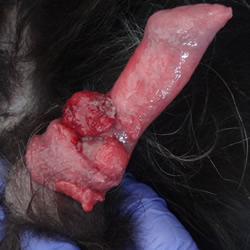 |
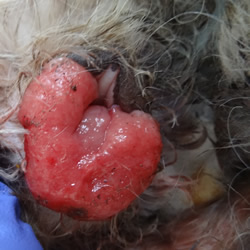 |
| CTVT in a male dog | CTVT in a female dog |
Where is CTVT found?
CTVT is a common disease in dogs around the world. Its distribution is associated with the presence of free-roaming dogs.
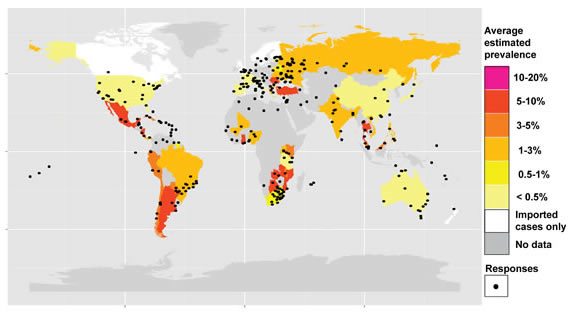
![Olga Glebova]](https://www.tcg.vet.cam.ac.uk/files/media/cytology-olga-glebova-2.jpg)
How is CTVT spread?
CTVT is spread by the physical transfer of living cancer cells between dogs. This usually occurs during mating, but CTVT may also be transferred by licking, sniffing or parturition. Right: CTVT cancer cells.
How old is CTVT?
CTVT first emerged in a dog that lived about 6,000 years ago. All CTVT tumours carry the DNA belonging to this “founder dog”. By counting and analysing the mutations acquired by CTVT tumours around the world we can piece together how and when CTVT emerged and spread. CTVT is thus the oldest cancer known in nature.
Below: an artist's impression of the CTVT founder dog, reconstructed using genetic evidence (credit: Emma Werner).
![Emma Werner]](https://www.tcg.vet.cam.ac.uk/files/media/original-dog.jpg)
How does CTVT escape the immune system?
CTVT is a foreign graft within its host. The mechanisms used by CTVT to escape the immune system in its allogeneic hosts are incompletely understood; however, down-regulation of major histocompatibility complex (MHC) molecules and recruitment of an immunosuppressive microenvironment probably play a role.
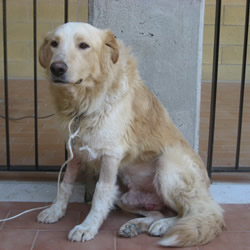
How is CTVT treated?
CTVT is usually treated with chemotherapy. Most dogs respond well to treatment and make a full recovery from the disease.
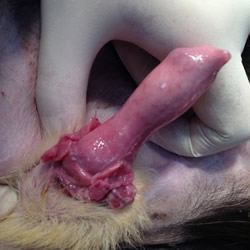 |
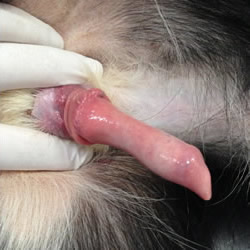 |
| A CTVT tumour before (left) and after (right) chemotherapy treatment. [Photo credit: Karina Ferreira de Castro] | |
